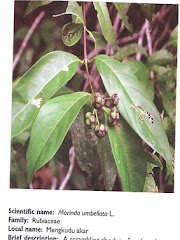Introduction
As late as 1970, Sudan boasted some of the most
unspoilt and isolated wilderness in east Africa,
and its wildlife populations were world-renowned.
While the past few decades have witnessed a major
assault on both wildlife and their habitats, what
remains is both internationally significant and an
important resource opportunity for Sudan.
Ecosystems, issues, and the institutional structures
to manage wildlife and protected areas differ
markedly between north and south in Sudan. In
the north, the greatest damage has been inflicted
by habitat degradation, while in the south, it is
uncontrolled hunting that has decimated wildlife
populations. Many of the issues in the following
sections are hence addressed separately for the
two areas of the country. It should be noted
that the most important remaining wildlife and
protected areas in northern Sudan are on the
coastline or in the Red Sea; these are covered in
Chapter 12.
This chapter focuses on wildlife and protected
areas as a specific sector. It is acknowledged that
the larger topic of biodiversity has not been
adequately addressed in this assessment. While
the importance of conserving biodiversity is
unquestionable, a significant difficulty for action
on this front – in Sudan as elsewhere – is the lack
of government ownership: no single ministry is
responsible for this topic. As a result, the observed
implementation of recommendations under the
label of biodiversity is poor.
Although it has not been included as a specific sector
in this assessment, the biodiversity of Sudan was
studied and reported on in 2003 by a programme
funded by the Global Environment Facility (GEF)
under the auspices of the Convention on Biological
Diversity (CBD) [11.1].
Assessment activities
The investigation of issues related to wildlife and
protected areas in Sudan was conducted as part
of the overall assessment. Two commissioned
desk studies – one by the Boma Wildlife Training
Centre, the other by the Sudanese Environment
Conservation Society (SECS) – summarized
the extent of existing knowledge for the south
and north respectively [11.2, 11.3]. UNEP was
able to visit one major site in the north (Dinder
National Park), as well as a number of smaller
reserves. The protected areas of Southern Sudan
and Darfur were inaccessible due to security and
logistical constraints. However, information
was obtained from interviews and other sources
in the course of general fieldwork in Southern
Sudan.
Due to historical and ongoing conflicts, the
available data on wildlife is highly skewed, with
most recent information limited to northern and
central states. This lack of up to date field data is a
core problem for Southern Sudan’s protected areas,
but major studies by the Wildlife Conservation
Society are underway in 2007 to correct this.
11.2 Overview of the wildlife and
habitats of Sudan
The arid and semi-arid habitats of northern Sudan
have always had limited wildlife populations. In
the north, protected areas are mainly linked to the
Nile and its tributaries, and to the Red Sea coast,
where there are larger concentrations of wildlife.
In contrast, the savannah woodlands and flooded
grasslands of Southern Sudan have historically been
home to vast populations of mammals and birds,
especially migratory waterfowl. This abundance
of wildlife has led to the creation of numerous
national parks and game reserves by both British
colonial and independent Sudanese authorities.
There is a large volume of literature on the wildlife of
Sudan as recorded by casual observers who travelled
through or lived in Sudan during the 19th and first
half of the 20th centuries. A 1940s account, for
instance, describes large populations of elephant,
giraffe, giant eland, and both white and black rhino
across a wide belt of Southern Sudan. Because of the
civil war, however, few scientific studies of Sudan’s
wildlife have been conducted, and coverage of the
south has always been very limited.
The management of migratory wildlife outside of protected areas:
the white-eared kob
One of the distinctive features of the wildlife population of Southern Sudan is that much of it is found outside of protected areas. This
presents a range of challenges for conservation and management, as illustrated by the case of the white-eared kob antelope.
White-eared kob (Kobus kob leucotis) are largely restricted to Southern Sudan, east of the Nile, and to south-west Ethiopia
[11.19, 11.20]. These antelope are dependent on a plentiful supply of lush vegetation and their splayed hooves enable
them to utilize seasonally inundated grasslands. The spectacular migration of immense herds of white-eared kob in search
of grazing and water has been compared to that of the ungulates in the Serengeti.
Substantial populations of white-eared kob occur in Boma National Park, the Jonglei area and in Badingilo National Park
[11.20]. The paths of their migration vary from year to year, depending on distribution of rainfall and floods (see Figure
11.1). A survey and documentary film made in the early 1980s followed the herds of the Boma ecosystem as they moved
between their dry and wet season strongholds that year, and found that the herds moved up to 1,600 km per year, facing
a range of threats as they migrated through the different seasons, ecosystems and tribal regions [11.5].
The principle threats to the kob are seasonal drought, excessive hunting pressure and now the development of a new aidfunded
rural road network cutting across their migration routes. The sustainable solution to excessive hunting is considered
to be its containment and formalization rather than its outright prohibition, a measure which is both unachievable and
unenforceable. White-eared kob represent an ideal opportunity for sustainable harvesting: they have a vast habitat, are fast
breeders and are far better adapted to the harsh environment of the clay plains and wetlands than cattle. The spectacular
nature of the kob migration may support some wildlife tourism in future but it is unrealistic to expect tourism revenue to
provide an acceptable substitute for all of the livelihoods currently supported by hunting.
Minimizing the impact of the new road network will require some innovative thinking to integrate animal behaviour
considerations into road design and development controls. Dedicated wildlife-crossing corridors, culverting and underpasses
are all options that could reduce road accident-related animal deaths, while banning hunting within set distances of the
new roads may help to control vehicle-assisted poaching.
As a result of this lack of technical fieldwork,
virtually all up to date evidence of wildlife
distribution in Southern Sudan outside of a
few protected areas is anecdotal and cannot be
easily substantiated. Nonetheless, this type of
information is considered to warrant reporting
in order to assess priorities for more substantive
assessments. Key information from 2005 and 2006
includes the sightings of elephants in the northern
part of the Sudd wetlands, and the sighting of very
large herds of tiang and white-eared kob in Jonglei
state. It is of note that both of these sightings took
place outside of legally protected areas (see Case
Study 11.1).
The only other recent data available on Southern
Sudan is from ground surveys of Nimule, Boma
and Southern National Park, carried out by the
New Sudan Wildlife Conservation Organization
(NSWCO) in 2001. The results of these surveys
and other information provided to UNEP by
the Boma Wildlife Training Centre indicate that
many protected areas, in Southern Sudan at least,
have remnant populations of most species.
Figure 11.1 Kob migration
The boundaries and names shown and the designations used on this map do not imply official endorsement or acceptance by the United Nations.
Jonglei
Lakes
Eastern Equatoria
Bahr El Jabal
Upper Nile
Unity
Western Equatoria
Upper Nile
Bor Boma
Ayod
Waat
Yirol
Pibor
Lafon
Akobo
Nasser
Terakeka
Pochalla
ETHIOPIA
0 40 80 120 160 200
Kilometres
Legend
Kob migration
Rivers
International border
State border
Sources:
Approximate movements of Boma
population of white-eared kob in the
early 1980s.
Adapted from Survival Anglia 1984.
UNEP sightings - May 2006
©Andrew Morton
Tiang, Bokor reedbuck and white-eared kob near
the main road in Mabior, Jonglei state. Wildlife in
Southern Sudan are found as much outside as
inside protected areas
The regional environments of Sudan defined in
Chapter 2 can be used as a basis for the description
of current wildlife habitats and populations:
• arid regions (coastal and arid region mountain
ranges, coastal plain, stony plains and dune fields);
• the Nile riverine strip;
• the Sahel belt, including the central dryland
agricultural belt;
• the Marra plateau;
• the Nuba mountains;
• savannah;
• wetlands and floodplains;
• subtropical lowlands;
• the Imatong and Jebel Gumbiri mountain
ranges; and
• subtidal coastline and islands – covered in
Chapter 12.
The delimitations of the various areas in which
wildlife are present are derived from a combination
of ecological, socio-economic, historical and
political factors. It should be noted, however,
that the boundaries between certain regions are
ill-defined, and that many animals migrate freely
across them.
Arid regions. The mountains bordering the Red
Sea, as well as those on the Ethiopian border
and in Northern Darfur, are host to isolated
low density populations of Nubian ibex, wild
sheep and several species of gazelle [11.3]. Larger
predators are limited to jackal and leopard. Due
to the lack of water, wildlife in the desert plains
are extremely limited, consisting principally of
Dorcas gazelle and smaller animals. Life centres on
wadis and oases, which are commonly occupied
by nomadic pastoralists and their livestock.
The Nile riverine strip. The Nile riverine strip
is heavily populated and as such only supports
birdlife and smaller animals (including bats).
The Sahel belt, including the central dryland
agricultural belt. In the Sahel belt, the
combination of agricultural development and
roving pastoralists effectively excludes large
wildlife, although the region does host migratory
birds, particularly in the seasonal wetlands and
irrigated areas. With the important exception
of Dinder National Park, the expansion of
mechanized agriculture has eliminated much of
the wild habitat in the Sahel belt.
The Marra plateau. The forests of Jebel Marra
historically hosted significant populations of
wildlife, including lion and greater kudu [11.3].
Limited surveys in 1998 (the latest available)
reported high levels of poaching at that time. Due
to the conflict in Darfur, there is only negligible
information on the current status of wildlife in
this region.
The Nuba mountains. The wooded highlands
of the Nuba mountains historically held large
populations of wildlife, but all recent reports
indicate that the civil war led to a massive decline
in numbers and diversity, even though forest cover
is still substantial. The UNEP team travelled
extensively through the Nuba mountains without
any sightings or reports of wildlife.
Savannah. The bulk of the remaining wildlife of
Sudan is found in the savannah of central and
south Sudan, though the data on wildlife density
in these regions is negligible.
Historical reports include large-scale populations of
white and black rhino, zebra, numerous antelope
species, lion, and leopard. In addition, aerial surveys
carried out in the woodland savannah of Southern
National Park in November 1980 revealed sizeable
population estimates of elephant (15,404), buffalo
(75,826), hartebeest (14,906) and giraffe (2,097)
[11.4]. The number of white rhino in Southern
National Park was estimated to be 168, which
then represented a small but significant remnant
population of an extremely endangered subspecies
of rhino. In 1980, aerial surveys carried out in Boma
(mixed savannah and floodplain habitats) indicated
that the park was used by large populations of a
wide variety of species as a dry season refuge, with
the exception of the tiang, whose numbers increased
considerably during the wet season [11.5].
Wetlands and floodplains. The vast wetlands
and floodplains of south Sudan, which include
the Sudd and the Machar marshes, are an
internationally significant wildlife haven, particularly
for migratory waterfowl. These unique
habitats also support many species not seen or
found in large numbers outside of Sudan, such as
the Nile lechwe antelope, the shoebill stork and
the white-eared kob.
Subtropical lowlands. The subtropical lowlands
form the northern and western limits of the
central African rainforest belt and thus host
many subtropical closed forest species, such as
the chimpanzee.
The Imatong and Jebel Gumbiri mountain
ranges. The wetter microclimates of these
isolated mountains in the far south of Southern
Sudan support thick montane forest. There is
only negligible information available on wildlife
occurrences in these important ecosystems.
The flooded grasslands of Southern Sudan support very large bird populations, including black-crowned
cranes (Balearica pavonina) (top left), pink-backed pelicans (Pelecanus rufescens) (top right), cattle egrets
(Bubulcus ibis) (bottom left), and saddle-billed storks (Ephippiorhynchus senegalensis) (bottom right), seen
near Padak in Jonglei state
Sudan harbours a number of globally important
and endangered species of mammals, birds,
reptiles and plants, as well as endemic species.
In addition, there are a number of species listed
as vulnerable by IUCN, including sixteen species
of mammals, birds and reptiles: hippopotamus
(Hippopotamus amphibius); cheetah (Acinonyx
jubatus); African lion (Panthera leo); Barbary
sheep (Ammotragus lervia); Dorcas gazelle (Gazella
dorcas); red-fronted gazelle (Gazella rufifrons);
Soemmerring’s gazelle (Gazella soemmerringei);
African elephant (Loxodonta africana); Trevor’s
free-tailed bat (Mops trevori); horn-skinned
bat (Eptesicus floweri); greater spotted eagle
(Aquila clanga); imperial eagle (Aquila heliaca);
houbara bustard (Chlamydotis undulata); lesser
kestrel (Falco naumanni); lappet-faced vulture
(Torgos tracheliotos); and African spurred tortoise
(Geochelone sulcata) [11.12 ].
The Mongalla gazelle is not endangered but has
a relatively small habitat. Rangeland burning such
as has recently occurred here is favourable to this
species, as it thrives on short new grass
Common name Scientific name Red List category
Mammals
Addax* Addax maculatus CR A2cd
African ass Equus africanus CR A1b
Dama gazelle Gazella dama CR A2cd
Nubian ibex Capra nubiana EN C2a
Grevy’s zebra* Equus grevyi EN A1a+2c
Rhim gazelle Gazella leptoceros EN C1+2a
African wild dog Lycaon pictus EN C2a(i)
Chimpanzee Pan troglodytes EN A3cd
Birds
Northern bald ibis Geronticus eremita CR C2a(ii)
Sociable lapwing Vanellus gregarius CR A3bc
Basra reed warbler Acrocephalus griseldis EN A2bc+3bc
Saker falcon Falco cherrug EN A2bcd+3b
Spotted ground-thrush Zoothera guttata EN C2a(i)
Reptiles
Hawksbill turtle Eretmochelys imbricata CR A1bd
Green turtle Chelonia mydas EN A2bd
Plants
Medemia argun Medemia argun CR B1+2c
Nubian dragon tree Dracaena ombet EN A1cd
CR = critically endangered; EN = endangered; * questionable occurrence in Sudan
Variable protection
A significant number of areas throughout Sudan
have been gazetted or listed as having some form
of legal protection by the British colonial or the
independent Sudanese authorities. In practice,
however, the level of protection afforded to these
areas has ranged from slight to negligible, and many
exist only on paper today. Moreover, many of the
previously protected or important areas are located in
regions affected by conflict and have hence suffered
from a long-term absence of the rule of law.
Protected areas of northern Sudan
According to the information available to UNEP,
northern Sudan has six actual or proposed marine
protected sites [11.13], with a total area of
approximately 1,900 km², and twenty-six actual or
proposed terrestrial and freshwater protected sites,
with a total area of approximately 157,000 km²
[11.1, 11.2, 11.14, 11.15, 11.16, 11.17].
أَلَمْ تَرَ أَنَّ اللَّهَ يُسَبِّحُ لَهُ مَنْ فِي السَّمَاوَاتِ وَالأرْضِ وَالطَّيْرُ صَافَّاتٍ كُلٌّ قَدْ عَلِمَ صَلاتَهُ وَتَسْبِيحَهُ وَاللَّهُ عَلِيمٌ بِمَا يَفْعَلُونَ Tidakkah kamu tahu bahwasanya Allah: kepada-Nya bertasbih apa yang di langit dan di bumi dan (juga) burung dengan mengembangkan sayapnya. Masing-masing telah mengetahui (cara) solat dan tasbihnya, dan Allah Amat Mengetahui apa yang mereka kerjakan. an-Nur:41
Tazkirah
Sami Yusuf_try not to cry
mu'allim Muhammad Rasulullah Sallallahu alaihi waSalam
ummi_mak_mother_ibu_Sami Yusuf
zikir Tok Guru Nik Abdul Aziz Nik Mat Mu'allimul Mursyidi
syeikh masyari afasi
ruang rindu
song
Arisu Rozah
Usia 40

Mudah mudahan diluaskan rezeki anugerah Allah
usia 40 tahun

UPM

Kuatan Pahe Darul Makmur
pemakaian serban semsa menunaikan solat_InsyaAllah ada sawaaban anugerah Allah
Rempuh halangan

Abah_menyokong kuat oengajian Ijazah UPM

usia 39 tahun

usia 23 tahun_UPM
An_Namiru

Ijazah Pengurusan Hutan UPM

General Lumber_Nik Mahmud Nik Hasan

Chengal

Tauliah

Semasa tugas dgn general lumber

PALAPES UPM

UPM

Rumah yang lawa

Muhammad_Abdullah CD
semasa bermukim di Kuatan Pahe Darul Makmur
Ijazah

air terjun

Borneo land

GREEN PEACE
GREEN PEACE
Kelang

Ahlul Bayti_ Sayid Alawi Al Maliki

Asadu_ Tenang serta Berani

atTiflatul Falasthiniin

Sayid Muhammad Ahlul Bayt keturunan Rasulullah

AnNamiru_SAFARI_Kembara

AnNamiru_resting
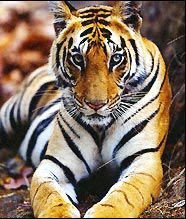
Hamas

sabaha anNamiru fil nahri

Namir sedang membersih

Tok Guru Mualimul_Mursyid

An_Namiru
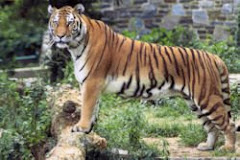.jpg)
Namir_istirehat
.jpg)
SaaRa AnNamiru fil_Midan
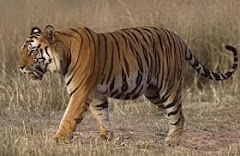.jpg)
Renungan Sang Harimau_Sabaha AnNamiru
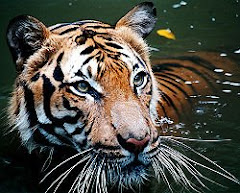.jpg)
Syaraba AnNamiru Ma_A
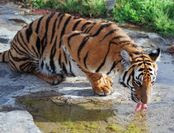.jpg)
AnNamiru_Riadhah
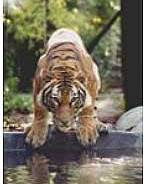.jpg)
AnNamiru_Riadhah
.jpg)
AnNimru ma_A waladuha
Namir fil_Ghabi (sebut Robi...
Namir

AdDubbu_Beruang di hutan

Amu Syahidan Wa La Tuba lil_A'duwwi

AsSyahid

Namir

Tangkas
najwa dan irah

sungai

najwa

najwa

Kaabatul musyarrafah

unta

Jabal Rahmah

masjid nabawi

masjid quba

dr.eg

najwa dan hadhirah

along[macho]
![along[macho]](https://blogger.googleusercontent.com/img/b/R29vZ2xl/AVvXsEjuMi7D33CmR0_KXrCW2XigfLcUuQurcvtqOS139ncCwEzCyB-jUopk7QK7anADIenJEm2S0N6gAY1ubnACYXewgiAsI3rBjnLTawM39alLL-rEopOoVqn0w5WpLhPJH3hrXNtchEhgtyaI/s240/P7150023.JPG)
harissa dan hadhirah

adik beradik
Tongkat Ali

Tongkat Ali
herba kacip Fatimah
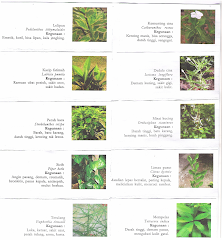
herba Kacip Fatimah
hempedu beruang
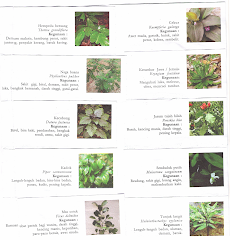
hempedu beruang
hempedu bumi

hempedu bumi
herba misai kucing

herba misai kucing
herba tongkat Ali
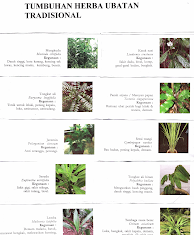.png)
Tongkat Ali
Ulama'

Ulama'
kapal terbang milik kerajaan negara ini yang dipakai pemimpin negara

kapal terbang
Adakah Insan ini Syahid

Syahid
Tok Ayah Haji Ismail

Saifuddin bersama Zakaria

Dinner....
Sukacita Kedatangan Tetamu
Pengikut
Kalimah Yang Baik

Ubi Jaga
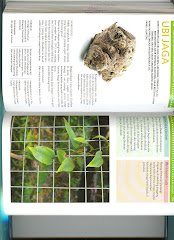
Ubi Jaga
Arkib Blog
Burung Lang Rajawali

Chinese Sparrowhawk
Kelicap Mayang Kelapa
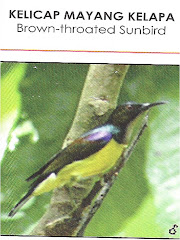
Brown-Throated Sunbird
Kopiah

Pokok Damar Minyak

Kacip Fatimah
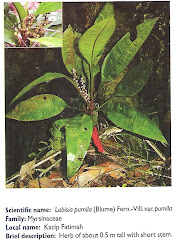
Mengkudu Akar
